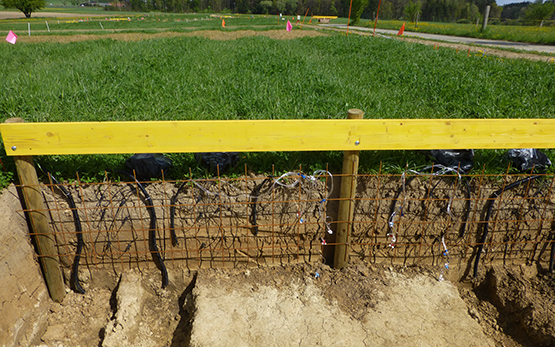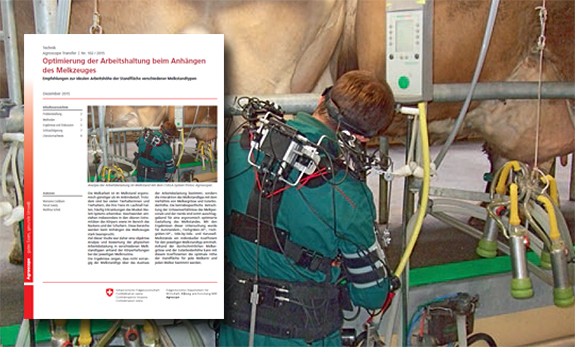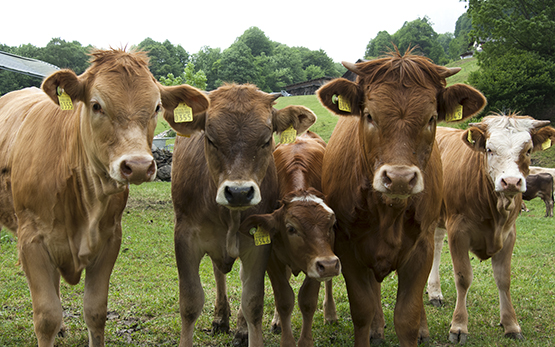Richter F., Suter M., Lüscher A., Buchmann N., El Benni N., Feola Conz R., Hartmann M., Jan P., Klaus V.
Effects of management practices on the ecosystem-service multifunctionality of temperate grasslands.
Nature Communications, 15, 2024, 1-15.
Meyer M., Gazzarin C., Jan P., El Benni N.
Understanding the heterogeneity of Swiss alpine summer farms for tailored agricultural policies: A typology.
Mountain Research and Development, 44, (1), 2024, R10-R18.
Ammann J., Mack G., El Benni N., Jin S., Newell-Price P., Tindale S., Hunter E., Vicario-Modrono V., Gallardo-Cobos R., Sánchez-Zamora P., Miskolci S., Frewer L. J.
Consumers across five European countries prioritise animal welfare above environmental sustainability when buying meat and dairy products.
Food Quality and Preference, 117, 2024, 1-11.
Mack G., Ritzel C., Ammann J., El Benni N.
Improving the understanding of farmers’ non-compliance with agricultural policy regulations.
Journal of Rural Studies, 106, 2024, 1-11.
Saleh R., El Benni N., Masson S., Ammann J.
Public acceptance and sustainability perceptions of food produced with chemical, digital and mechanical weed control measures.
Food Quality and Preference, In Press, 2023, 1-25.
El Benni N.
Ernährungssicherheit in der Schweiz.
In: Brennpunkt Nahrung. 7. November, Luzern. 2023, 1-16.
Huber R., Bartkowski B., Brown C., El Benni N., Feil J.-H., Grohmann P., Joormann I., Leonhardt H., Mitter H., Müller B.
Farm typologies for understanding farm systems and improving agricultural policy.
Agricultural Systems, 213, 2023.
Tarruella M., Huber R., Mack G., El Benni N., Finger R.
Cost-effectiveness of farm- vs. regional-level climate change mitigation policies.
Q Open, In Press, 2023, 1-19.
Ammann J., Mack G., Irek J., Finger R., El Benni N.
Investigating the role of meat commitment in public preferences for animal welfare in Swiss agricultural policy.
In: Swiss Nutrition Conference. 10 November, Bern. 2023, 1.
El Benni N., Irek J., Finger R., Mack G., Ammann J.
How Swiss citizens perceive the multifunctional role of agriculture: Culture likely matters.
In: XVII Congress of the European Association of Agricultural Economics (EAAE) «Agri-Food Systems in a changing world: Connecting Science and Society», August 29th – September 1st, 2023, Rennes, France. 29 August, Rennes. 2023, 1-18.
Ammann J., Mack G., Irek J., Finger R., El Benni N.
Consumers’ meat commitment and the importance of animal welfare as agricultural policy goal.
Food Quality and Preference, 112, 2023, 1-13.
Hoop D., El Benni N.
Bewertung der Wettbewerbsfähigkeit der Milcherzeugung: Der Einfluss von Kostenallokationsmethoden.
Agroscope Science, 168, 2023, 1-17.
weitere Sprachen: englisch
El Benni N., Grovermann C., Finger R.
Agrarökonomische Evaluierungsmethoden für eine evidenzbasierte Agrarpolitik.
Agrarforschung Schweiz, 14, 2023, 172-182.
Meyer M., Gazzarin C., El Benni N., Jan P.
The structure of Swiss alpine summer farms: An old tradition through a new lens.
In: 33. Jahrestagung der Österreichischen Gesellschaft für Agrarökonomie. 27. September, Wien (AT). 2023.
El Benni N., Schmid D.
Der Zusammenhang zwischen Direktzahlungen und ausserlandwirtschaftlichen Tätigkeiten.
Agrarforschung Schweiz, 14, 2023, 67-75.
El Benni N., Irek J., Mack G., Ammann J.
Agrarpolitische Zielkonflikte aus der Sicht der KonsumentInnen.
In: Fachbeiratssitzung Mutterkuh Schweiz. 05. Mai, Brugg. 2023, 1-18.
Richter F., Lüscher A., Jan P., El Benni N., Suter M., Buchmann N., Klaus V.
Der Einfluss biologischer Bewirtschaftung auf Ökosystemleistungen von Wiesen und Weiden.
In: 16. Wissenschaftstagung Ökologischer Landbau. 09. März, Hrsg. FIBL, Frick. 2023, 1-4.
Klaus V., Richter F., Buchmann N., El Benni N., Jan P., Lüscher A.
Produktivität biologisch bewirtschafteter Weiden und Wiesen im Kanton Solothurn.
In: 16. Wissenschaftstagung Ökologischer Landbau. 9. März, Hrsg. FiBL, Frick. 2023, 1-4.
Ammann J., Walter A., El Benni N.
Dataset on digital technologies as learning content in farm manager training in Switzerland and willingness to use farm information systems.
Data in Brief, 48, 2023, 1-7.
El Benni N., Grovermann C., Finger R.
Towards more evidence-based agricultural and food policies.
Q Open, In Press, 2023, 1-24.








